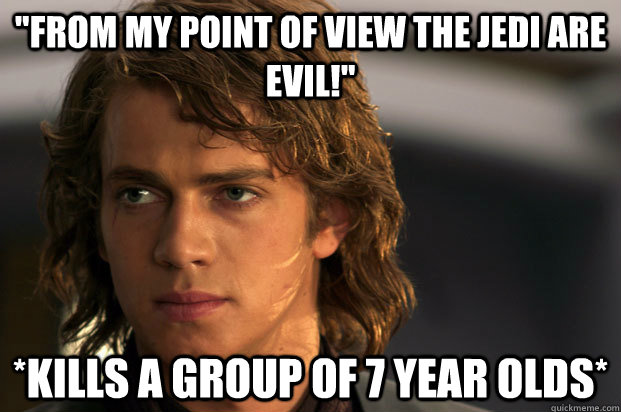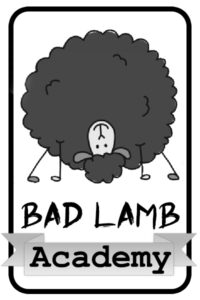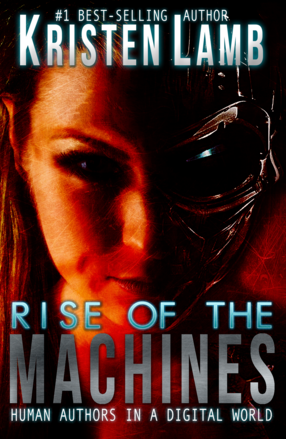There are all kinds of arguments about which area of craft is the most important for creating great fiction. Plot? Character? Voice? Theme? My opinion. They’re all organs in one body. Our brains will still work if our lungs have bronchitis, but maybe not at an optimal level. Similarly, there are people with brain injuries who have a strong heart. A body can “live” without everything operating in concert, and so can any story.
It’s ideal to hone our skills in all areas, and our goal is to be skilled at all of them. Can we be equally skilled? That’s another debate for another post.
I will say that plot (skeleton/brain) is very important. Our characters (heart) are only as strong as the crucible. Ultimately, all stories are about people. We might not recall every detail of a plot, but we DO remember characters. Ah, but here’s the sticky wicket. WHY do we remember characters? Because of plot. Stories are more than about people. Great stories are people overcoming great odds.
We don’t remember Luke Skywalker because he hung out on Tatooine waxing rhapsodic about his plight as a moisture farmer. We remember him and his allies because they went up against seemingly unbeatable odds and WON.
Yet, even if we come up with the coolest plot in the world, there are elements of character that should also be in the mix, lest our novel can become the literary equivalent of a CGI Star Wars Prequel NIGHTMARE. Characters should develop organically or the reader will call FOUL.
Additionally, if our characters are as deep as an Amarillo puddle, it will be virtually impossible for readers to emotionally connect.
Among many other reasons, I think this is why the Star Wars Prequels were like a bad acid trip at Chuck E. Cheese. Anakin was utterly unlikable and unredeemable simply because the writers were more focused on how many characters they could make into McDonald’s Happy Meal toys instead of sticking to the fundamentals of GOOD storytelling.
But Obi-Wan doesn’t take me seriously. Whaaaaahhhhhh! *SLAP*
If we’re missing emotional connection between the audience and our characters, our story loses critical wattage. What are some ways we can help form that connection? Today…
The Wound
Real humans have wounds that drive our wants, needs, perceptions, and reactions and so should all our characters (even the Big Boss Troublemaker-Antagonist). Recently, I was helping a student of my Antag-Gold class plot her novel. She had a good protagonist who was a control freak. My question: WHY?
Yes, genetics will have a role in forging our personality, but genes do not a good story make. Having a character be a certain way simply because we need them to be or act that way will work, but so will a heart with damaged valves.
Wounds drive how we perceive our world, what we believe we want, and how we will (or won’t) interact with others. This is critical for generating story tension and character arc.
For instance, my father abandoned us, my mother was chronically ill, and my little brother was legally blind. I was left to grow up too fast and take care of far too much way too early. THIS is why I struggle with being a control freak. From MY wound, %#!* didn’t get done unless I did it.
Additionally, because I grew up in the wake of constant broken promises, I’ve had to work hard to trust. It’s been a challenge to delegate and allow others to fail or succeed without my meddling. Also in my growing up years, achievement=love/attention. That wound drove me to seek dreams that weren’t mine to please others. I had to “arc” to walk away from people-pleasing if I wanted fulfillment.
Wounds Don’t Have to Be Big to Be BIG
Often, new writers will default to wounds like rape or death or some big tragedy to create the wound. To be clear, I am not saying these aren’t viable wounds, but never underestimate the “smaller” and more relatable emotional injuries. The more a reader can empathize with one or more characters, the deeper that connection becomes.
Not everyone has lost their family to a sudden alien invasion— 😉 — but they can empathize with maybe never living up to expectations, being bullied, or not fitting in. LOTR rests on a small band of Hobbits who believe they are too little to make a BIG difference.
Perhaps the character is the invisible middle child trying to forge an identity, the eldest trying to hold the world together, or the baby who “got away with murder” and “was handed everything.” Never underestimate family dynamics as sources for realistic and powerful psychic wounds.
For instance, my father was all play no work. Unfortunately, we suffered the consequences. Ironically, my grandfather was all work no play. Doubly ironic, my childlike father created a workaholic daughter (me); like thread, one loop feeding into the next weaving the “pattern” until someone changes “the pattern.”
Arc.
I’ve had to learn to lighten the hell up and balance The Force. But my workaholic, overachieving nature served up far more thorns than fruits.
Wounds Will Distort Happiness
Wounds generate illusions. Because I grew up poor and lived hand-to-mouth all through college, I “believed” that money and financial security would make me happy. At 27, I made more money than any person in their 20s should make…and I was miserable. I was eaten alive with emptiness. I’d achieved all that should have filled that hole—the college degree, the premium job and premium pay. And yet?
I was the person stranded in a desert gulping sand I believed was water from an oasis.
Character arc comes when a protagonist is placed in a problem strong enough to challenge the illusion and break it. The protagonist believes X=happiness/fulfillment. It is only through the story problem that the protagonist rises to become a hero, a person capable of realizing they were wrong and that they’d been coveting a shill at the expense of the gold.
Thus, when creating characters, keep the wound at the forefront of your mind.
How does it affect what he/she believes about their own identity? What do they believe will make them happy? What is it that you (Author God) know that’s really what will make them happy? What needs to change for that character to lose the blinders? What is the perfect problem (plot) to force the protagonist to see the hard truth of the unhealed wound?
What are your thoughts? Writing can be healing and therapeutic. Have you ever siphoned from your own hurt-reservoir to deepen your characters? Can you think of how even small hurts can become super-sized? What are some ways you’ve witnessed wounds driving people in wrong directions toward false happiness? Have you been there, done that and earned the t-shirt?
I LOVE hearing from you!
To prove it and show my love, for the month of SEPTEMBER, everyone who leaves a comment I will put your name in a hat. If you comment and link back to my blog on your blog, you get your name in the hat twice. What do you win? The unvarnished truth from yours truly. I will pick a winner once a month and it will be a critique of the first 20 pages of your novel, or your query letter, or your synopsis (5 pages or less).
Winner for August is Lara McGill. Lara, please send your choice of 20 pages (5000 words) in a WORD document to kristen at wana intl dot com. You can also choose to send a query letter (250 words) or a synopsis (up to 750 words). Congratulations!
ANNOUNCEMENTS:
Back to School!
Upcoming Classes: NEW!!! Going Pro Series
TONIGHT is Going Pro Craft, then Going Pro SocialMedia/Branding September 6th, Going Pro Business September 10th, Going Pro All the Way! (ALL THREE).
For those who need help building a platform and keeping it SIMPLE, pick up a copy of my latest social media/branding book Rise of the Machines—Human Authors in a Digital World on AMAZON, iBooks, or Nook.












71 comments
8 pings
Skip to comment form
Right on target. This character analysis about wounds also works for creative non-fiction, I’d bet. By the way, how do you get to the spot in Creative Commons where you find these great photos? The way you weave them into your blog works great.
Author
Try WANA commons. The WANAs have contributed thousands of images you are free to use. Also memes are fair game in my book. Images can also be found by googling Flickr Creative Commons then search for the free use license. I use images that allow me to modify if I want (I use Pic Monkey) and only require attribution.
And THANKS! Helps break up the text and make it easier on the eyes.
You can also google “cc images” and that should take you to the Creative Commons search page, where you can enter your search terms and select from a dozen or so different sites – Flickr, Wikimedia, Google Images etc etc but only getting CC results. Love it!
I was currently working on world building for my story (It’s very massive, I feel that I might have overestimated myself at times) but this post struck me. I currently lack antagonists, despite having groups of antagonists that would oppose my protagonists.
At the moment, all I have are protagonists who face different issues. One is branded evil because he became ‘something that is not human’ by the society he lived in. He was a normal person who became a wanted criminal overnight for something he has no control of. He questions whether the hatred towards people just like him were justified or not.
Another face issues of his heritage, being a mixed race and some family neglect causing him to desperately grasp at something to ‘belong somewhere’. One faces the issue of loyalty: does she belong to the culture she grew up in, or the culture she was born into? The roles she is expected to perform differs from the roles she wants to do.
All of the protagonists are ‘out of place’ wherever they go. I really love this post because it makes me think more about my characters. What really makes them happy, and are the things they fight for worth it? I hope I could write in their pain and make them come alive in the story. Perhaps I should do the same for the antagonists that have yet to come up. Thank you for the wonderful, enlightening post!
How do you do that? You always read my mind. I know I’m not the only one struggling with this. Based on feedback from agents, I’m going back in and ramping up the conflict. This post couldn’t be more timely for me. You are so good at making me feel like you are talking directly to me and getting my butt moving.
Thank you!
Reblogged this on Kentucky Mountain Girl News and commented:
KMGN: An excellent post and worth bookmarking and saving.
Reblogged this on The Word Peddler and commented:
When I write, I feel compelled to pick at scabs–to explore the threads that bind us to our past–in all of its messy, warped, co-dependent horror. The wounds, both large and small, that we continue to rub raw. Maybe that is why I love this post SO MUCH!
The most memorable wound in one of my books was Anne in Anne’s Courage by Skye Michaels. Anne has scars from breast cancer surgery and as a result shies away from physical relationships until she meets bad boy, Jamie Devereau, who blasts through her reserve. Jamie has wounds of his own from his dysfunctional childhood. Since I have also had breast cancer surgery that story was very personal to me and remains one of my favorites. Barbara Mikula/Skye Michaels
Fantastic (and meaningful) article. Very helpful and insightful! Thanks so much for sharing!
I enjoyed reading about wounds and how characters can deal with them. I agree about the Star Wars prequels. They just weren’t character-driven like the original movies were. Too much going on, too many characters. In the original movies, I knew how four or five characters would react to a given situation (but please George try to surprise me).
Reblogged this on I'm Write Dammit! and commented:
A fantastic read! What is boils down to is understanding that the hurts in our lives – no matter how seemingly simple – can impact us more than we imagine…and that is a terrific tool for character development.
I’ve been on a horror writing streak lately and this couldn’t be more timely. 😀 As I’ve watched crime dramas to “get in the mood” I’ve seen how every one of the “bad guys” has some wound or another that drives them fiercely toward their end goal whether perceived as good or evil. Nice to know that for the most part I’m on the right track. Also it’s probably what I’ve been missing in a trilogy that I’d written but is fatally flawed and needs something to bring it up to the story that I KNOW it can be. Now that I’ve read this (I’ve known it deep down….but I keep forgetting to put it in my writings) it reinforces what I need to go back through and read it for. Thank you!
Your articles are always great! 😀
Reblogged this on Sunsets and more and commented:
Definitely need to think more about the wound… This post was an eye opener, I have definitely not paid attention to that part of the character, not intentionally anyway.
I need to do that from now on.
To concur: The inner demon, as Larry Brooks calls it, or the inner conflict as Deb Dixson calls it, needs to be designed into the charater– to serve the stroy– after plot and concept are created and before writing a draft. Story is conflict and how it is delt with via character is premise. The wound needs to be understood by the writer at the onset so the protagonist, by midpoint, can overcome it and proceed to challenge (win or loose) the outer conflict leading to a conclustion. If the wound isn’t used to hold back character there is no character arc.
now you’ve got me all wound up!
I always worry that my characters don’t have enough of this. What if I’ve messed up with them? What if I didn’t find the right wound? What if they aren’t changing enough in the story? It’s worrisome.
I’m glad for this blog, though. I’ll be applying this idea to my writing from now on.
Excellent post! I was thinking of posting one similar to this. I think all fiction writers should know this.
You are breaking the family cycle and this post is proof. WANA is also proof, for you’ve found a way to combine work and play, to combine making a living and a passion. My wounds? Yeah, they’re woven into my writing.
Thank you, Kirsten, for explaining the concept of character arcs so clearly. Somebody kept using that term to me the other day, and I sort of guessed what it meant rather than admit that I wasn’t sure.
VERY GOOD! Great advice to soak in. When writing I want my characters to very relatable, lovable, or even to piss off the reader! Thanks i may share this with my writer’s group!!
Excellent post! This was just what I needed to read at this point in my writing. Thank you.
I disagree with you on the Star Wars prequels. I thought they were very good, and while Hayden Christensen was a bad actor in Episode II, I didn’t think it was enough to ruin the entire prequel series.
Author
No, there was a compilation of many other writing disasters. He didn’t kill it for me single-handedly. My vision of hell has Jar Jar Binks. Eh, everyone has a different opinion. I love movies others hate. And the SW Prequel Battle is still going on the hyperlinked post. The comments are pretty amazing. Better than my blog, LOL.
I do agree with you about Jar Jar. LoL
I’d argue that Hayden was given an impossible role. He’s supposed to go from the Savior to Satan in one movie and not given much reason. Perhaps a great actor would have done a better job, but the role, as written, had serious problems. I’d say the problem was that the movie was boxed in by where it had to start and where it had to end.
Reblogged this on caroleavilablog and commented:
Valuable writing advice to ramp up just about any story or creative non-fiction work. Kristen Lamb is amazing!
I reblogged on CaroleAvilaBlog. I thoroughly enjoyed your blog and quoted you on my twitter page: “Wounds don’t have to be big to be big.” I am currently writing my non-fiction work based on my life coaching work and personal experience: The Long Term Effects of Sexual Abuse. For the past two decades I have uncovered a mountain of little wounds that are still being explored. Thank you for your insight and honest sharing!
Thanks for this insightful post! When brainstorming ideas, I often wonder if the plot should drive the reasons for the wound, or vice versa, and have found that both work well, but that the more authentic stories always seem to come from creating a story around the wound. This is also, of course, me drawing from my own well, and I think this results in the truest stories of all.
Thank you for this timely post! It’s good to know that the wounds don’t have to be big to be big. I’m back to re-writing and tweaking.
The wound is one aspect, the character’s reaction to that wound another. In creating sympathy, the writer might have the character diagnosed with cancer. While sad, the character’s reaction is the deeper well.
Thank you so much. Reading this helped me realize I have not taken the hero in my current novel to the depth he needs to go. His wound is there, but I have not made enough of it in the course of my story.
Reblogged this on C.C. WILEY.
I’d love to use a different avatar for your site. Unfortunately, I have a wordpress.org account (which I don’t and won’t use) not a wordpress.com. I find them a pain in the you know what to work with and lose pages every time someone tries to help me with the site. I’ve left them for Web’s where I can get immediate help when I need it.
Sorry if this sounds like a whine. Perhaps you have some cheese to go with it?
Judi Ring inhouseditor@yahoo.com judi@judisediting.com http://www.judisediting.com
Author
Gravatar can help but it’s pissy.
Very timely blog for me. My heroine has physical and emotional wounds but I am not sure whether the arc is credible…my fingers are crossed for the pick-out-of-the-hat. I have re-blogged this post as well. Thanks, Kristen!
Reblogged this on Joanna Lloyd and commented:
Such important information to consider … did I heal my character’s wounds credibly?
you are amazing. i just discovered your blog lately and already i have learned so much.
Author
Great to meet you!
Hello Kristen, once again something to think about, thankyou
Also this inquisitive old man would like to put his photo on his entries on your blog, is there an instruction I could follow??
Author
Use Gravatar and hit buttons until it works? I be a technology expert :D.
Reblogged this on Memoir Notes.
Thank you, thank you, for your clear explanation of character arcs!!
What an awful picture of bullying! I want to scoop up those three boys and hug them…
Author
Funny our reaction and a perfect example of how wounds drive us. My first thought would be to throttle the bully :D….and make way for you to hug the three victims.
My protagonist has survivor guilt which whilst a big wound, and perhaps overused, is fortunately relevant to the story so I don’t feel so bad about it. She’s spent most of her life searching for a reason why she survived in order to assuage her guilt and when she finds what she believes is that reason, she latches on to it and won’t let go. It seems innocuous enough to start with but then becomes a dangerous obsession because to her, she has found her purpose and is healing her wound. People around her disagree and it begins to destroy her relationship with them. Towards the end she does briefly get pulled out of it but the temptation is too great and then tragedy strikes. No one comes out of this well.
I’m such a happy soul!
Author
Big wounds are perfectly fine, but remember the best writing has dimensional characters, so others in the supporting cast have wounds as well. When you know not EVERYONE has to have something BIG for it to be BIG it helps add variation. For instance, an ally who had a perfectly normal childhood and was loved will not understand why she is so obsessed and can’t move on. Their wound might be they feel their life lacks meaning. It’s too normal and have guilt for being so blessed, which is why they would ally to help her…yet still not “get” her.
Reblogged this on A.J. Sendall and commented:
Thanks for another great post, Kristen.
I believe wounds are central to character development, and can be used to explain otherwise eccentric behaviour, irrational anger or sadness. All of which goes toward adding colour and depth.
I’ve been teaching creative writing for years, but never used the concept of “wound”. Thanks for putting an identifiable label on that abstract idea!
I love all the positive comments for this great post. BUT if you like this, then you really need to consider taking Kristen’s Going Pro class. I was privileged to be able to participate in round one of her Going Pro class last night. It’s PURE KRISTEN! for two hours. What more could one ask? Definitely worth the money. And you get to ask questions.
Thank you, Kristen. You are the best teacher ever.
Author
Awww, so glad to HEAR that. I was worried. I can be a fritter 😀 .
Reblogged this on Author Eric Johnson.
Really enjoyed this article, especially the Star Wars prequel sludge writing that nearly destroyed one of my favorite villains. (Just had to mentally dismiss the entire series from canon, much like X-Men 3) Anakin is one of the prime examples of frustratingly irresponsible character ‘development’ that I’ve ever seen. So much illogical, hamfisted, entirely forced issues, and let’s not talk about the dialogue.
But anyhow, I like your views on wounds. The things that drive us. So important to the motivation and growth of the character. Definitely worth the time to explain and allow the reader to see and understand why the character thinks and behaves as they do.
Reblogged this on Awakening Chymeeras and commented:
Cool post about using small “wounds” to add texture and layers to your characters and understanding what makes them tick!
I understand my protagonist perfectly but I struggle with the antagonist. Without really knowing I did it, I explained my main character’s characteristics in the way you just explained. But I haven’t done it for the bad guy. No wonder my bad guy character is so weak! Thanks 🙂
Reblogged this on Stephen Andrew and commented:
Here is a fantastic post on the WHY behind your character’s actions!
Reblogged this on http://stephenandrewbooks.wordpress.com
Thanks for the insightful post! Loved it!
I think this is huge when it comes to antagonists. Keeping the WOUND in mind is helpful for any character, but I think it is more often neglected in villains, who are left appearing as simple baddies who do bad things just because they’re bad. Giving us a WHY for a villain, makes us relate to them, makes them sympathetic, and makes them COMPLEX and far more interesting.
Any article which points out the stunning weaknesses of the Star Wars prequels is a good article. But beyond that….
Certainly I’ve pulled from real life slings and arrows for fiction, as I think every writer has. But we have to disguise them well if we want to keep going out in public or getting invited to family dinners! And yes, the smaller wounds are not only more relatable, but they keep stories from becoming just formulaic trope regurgitators (I am really quite tired of the raped-woman backstory and the avenging-raped-woman male version). Good points.
Thank you for posting. I’ve read several blog posts about character but your’s has made actual sense for me. As the oldest child of 6, I was always the responsible one, the one who got things done, the one in charge of the rest. Thanks for reminding us that more often than not, it’s the small things that make the character.
Food for thought – AGAIN!
I think my main character’s wound stems from how her aunt raised her – and of course, her aunt is packing some pretty deep wounds too. Now I’ve got to think about everyone else!
Some of my writing is about psychological struggles. This is especially true when I’m building my main characters. This post has helped me further define what I’m looking for. Thank you.
Happy Friday all !!! 😀 In the last two days, I’ve done more writing than I have in the last two months. I attribute that to having no more Youtube to mess up my time. Odd how addictive old t.v movies and internet celebs (Nostalgia Critic) can be.
Anywho, can anyone give me a basic definition of Character Arc ? I found one definition, but the thing went on for paragraphs! Literally. I felt like Archie Bunker, saying, “Get to the pernt, Edith. Get to the pernt.” (see also, POINT) .
Character arc is the personnel growth or progression of the protagonist over the course of the story. Normally equated with her inner conflict or inner demon it originates by way of her background/back-story , like a psychological wound or damage. The demon affects her ability to solve the major external conflict. At the midpoint she understands that her inner demon is holding her back and she starts fighting it and by the second plot point ( 75% into the yarn) she succeeds in beating back the inner demon and therefor gets the upper hand in the battle of the external conflict. Only then is she able to beat the bad guy or otherwise win the story goal and becomes a true hero. Before she wins the internal struggle, she is not yet a hero nor is she capable of winning the day. In the end she becomes a better, different person. There are acceptations, some characters don’t have an arc like James Bond, Perter Langdon– depends on the genre and story focus.
Even as I write this, I’m listening to Charlotte Church and Joshua Winslow Groban sing THE PRAYER. (I’m MELTING!!!!)
Interestingly, that might play into the character arc issue. Thank you, by the way! 😀 Going from conflict/dilemma and GOD WILLING , having the clarity and bravery to do the right thing, even if their old self is saying that it’s better to just go along to get along . That idea is popular, but it sometimes either doesn’t resolve a problem, or it adds to the conflict because the character doesn’t have the strength of character to change.
The willingness to get along/go along ( when she knows it’s wrong) can be an inner conflict when it’s a hedge preventing the character from acting when she should-or must act. But it isn’t really strong from a story standpoint unless that dynamic comes from an extreme situation originating in back story and the outcome, in the present, is her bad behavor that affects others negatively.She must change to meet the goal. For character to be most interesting everything in her life should be dramatic, more so than normal life. Nobody wants to read about normal life, they want to see life on the edge I.E> Characters doing what real people would never do– that’s what sells books. If her inner demon is an inability to act then make the stakes huge and her inadequacy painfully consequential . If she is her own worst enemy make it hurt a lot of people.
Hi Rachel 😀 And thanks. My character will do something…semi-controversial. Many will applaud her actions, but her own mother and sister turn against her, which causes my main character (Jolene) to get bitter and…well, it gets pretty odd from there. She becomes a friend to society, in part, but her own worst enemy. She doesn’t really agree with her choices, but her career serves as a backlash and a ‘cure’ for those who might end up growing up in her sort of home.
My situation is trying to figure out where Jolene’s ‘fork in the road’ will be. What and/or Who will bring her to that ‘valley of decision’.
whatever that fork in the road event will be, it sounds like it is the midpoint milestone scene where everything turns in a new direction– so ask yourself what would compel her to shift gears? and, what would lead her to the story’s end? Where in the story things change radically are the midpoint, first plot point, and second plot point. I don’t know this plot but it sounds like the midpoint from my limited perspective. What ever you toss at her it should be something that pushes the story forward toward the conclusion.
That’s what I’m still trying to figure out; who or what will be that turning point. I’m still rough sketching right now, so I’ll HOPEFULLY have that idea by the time I have to have it.
This is very timely for me. For draft 4 of my WIP, I’m remapping my lead character according to the traits of the mythic hero (one of those being the hero’s wound). I think this might be the key to finally getting inside her skin. So thanks!
Thanks for a very real and insightful article. Always good to look at the problem with fresh eyes.
Thank you so much for the insights on character development Kristen! You gave me inspiration to resurrect a story that’s gathered some dust. A family man who battles PTSD silently in the cul-de-sac upon return from loss on the battlefield…Just followed you on Twitter and look forward to reading more from you!
This is quite affirming. I just started writing a protagonist whose, like, this cyberpunk ninja-goth elf fairy kicker-of-asses type character (he’s less campy in the stories). I decided that he gets tongue-tied when he’s put in any type of speaking situation. He’s naturally poetical and elegant-tongued, but his dad so aggressively disapproved of wittiness (that’s the short version) that the protagonist has anxiety related to any attempt to be witty or speak intelligently. It gets him into troubles, like he chooses to give up in situations where a little intelligent conversation might solve his problems. The primary conflicts are circling around the necessity for verbal eloquence, and he keeps having problems with those situations.
Also, in your “character as heart” metaphor, I always feel like characters act as the fingers, enacting the motion of the story. I think that the audience is the heart, in a sense.
[…] How to Intensify Conflict & Deepen Characters—The Wound. […]
[…] made me give a character a conflict transplant this week. The character is still prickly, but now she’s got legitimate (and not too […]
[…] http://warriorwriters.wordpress.com/2014/09/03/how-to-intensify-conflict-deepen-characters-the-wound… […]
[…] Kristen Lamb wrote about How to Intensify Conflict & Deepen Characters. She talks about the character’s wound. Everyone has one(or more). They don’t always […]
[…] How do you make your characters unforgettable? Denise Drespling has 7 tips for making well-rounded characters, Pam Mingle shares 7 ways to create empathy for your protagonist, and Kristen Lamb shows us how the character wound deepens conflict. […]
[…] got in the way of the next posts I had planned. But, the first of the intended series was about THE WOUND. Check it out if you have a bit of […]
[…] have talked about The Wound before. In Thelma & Louise what is the wound? A lifetime of male oppression. In Thelma’s […]
[…] up what Kristen calls the “properly flawed” character. Kristen also has another post on “The Wound” that helped me go deeper with one of my characters, and he isn’t even a very wounded/flawed […]